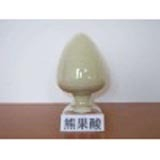Uva Ursi Extract
111Category: Pharmaceuticals and Biochemicals

CAS NO: EC NO: Molecular Formula: Molecular Weight: Specification: Product description:
Latin Name(Arctostsphylos uva ursi) Active Ingredient(Ursolic Acid,arbutin) Specification(98%) Test Method(HPLC) Uva Ursi Extract 1.Latin Name(Arctostsphylos uva ursi) 2.Active Ingredient(Ursolic Acid,arbutin) 3.Specification(98%) 4.Test Method(HPLC) Also referred to as "bearberry" in honor of the bears so fond of its bright red or pink berries, uva ursi (Arctostaphylos uva ursi) is an evergreen shrub that has long been popular for fighting urinary tract infections. Its leathery green leaves are formulated into teas, tinctures, capsules, and extracts for this purpose. The plant grows throughout colder northern climates from North America to Asia and is particularly popular in Europe for treating urinary tract inflammation. Official physician handbooks in the United States listed uva ursi as a urinary antiseptic for a century up until the 1920s. The antiseptic compound in uva ursi is arbutin, which the body converts into a substance with proven astringent and bacteria-killing powers called hydroquinone. Interestingly, arbutin taken alone is not as effective as the whole uva ursi plant in controlling urinary tract infections. That's because intestinal bacteria can break down arbutin, but they are less likely to do so in the presence of other uva ursi compounds. To effectively fight a urinary tract infection with uva ursi, your urine must be alkaline. You may be able to help maintain an alkaline pH by consuming plenty of dairy products and non-citrus fruits. By the same token, avoid taking uva ursi with substances that have the reverse effect--acidifying the urine--such as citrus fruits, tomatoes, and vitamin C supplements. In addition to its antiseptic and astringent actions, uva ursi may help to flush out bacteria by promoting urination. General Interaction There are no known drug or nutrient interactions associated with uva ursi. Cautions any people experience urinary tract infections as a frequent urge to urinate and a burning or otherwise painful sensation when voiding. Consult a doctor if these kinds of signs or symptoms persist for more than 24 to 36 hours because potentially serious complications can develop, including kidney problems. While some people with sensitive stomachs develop nausea and vomiting with uva ursi, the herb appears to be quite safe for most people when taken at commonly recommended doses. However, high doses can cause a disconcerting--although apparently harmless--greenish-brown discoloration of the urine. Extremely high doses of uva ursi, in the range of 10 times greater than the commonly recommended amount, can cause vomiting, ringing in the ears, shortness of breath, convulsions, and collapse in some cases. Liver damage is also a risk with high doses taken over extended periods of time. Because of a lack of information regarding safety, people with kidney disease, pregnant women, and breast-feeding mothers should not take uva ursi. Large doses may stimulate uterine contractions during pregnancy. Don't take uva ursi for more than 7 to 10 days at a time, and limit your overall use of uva ursi to no more than 5 treatment cycles a year.
if you are sourcing Uva Ursi Extract from China ,just feel free to inquire



